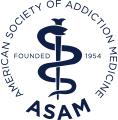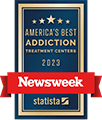Over the past three years, changes to North Carolina law and an ongoing awareness campaign have greatly expanded access to naloxone, a medication that can, when administered in time, immediately counteract the effects of an opioid overdose.
The first phase of the expansion effort involved equipping law enforcement officers and other first responders with naloxone kits. According to NC Harm Reduction, the North Carolina nonprofit organization that oversees most naloxone throughout the state, personnel with 136 police departments in North Carolina now carry naloxone.
Getting naloxone into the hands of people who are likely to be on the scene of opioid overdoses appears to be having its intended effect. For example, between March and November 2016, police in Wilmington, North Carolina, were able to use naloxone to save 30 people who were in the midst of an opioid overdose. Based upon results such as these, North Carolina recently authorized the sale of naloxone to any person in the state.
However, such successes have not prevented criticism of the effort to increase access to naloxone in Wilmington and throughout North Carolina.
The primary focus of the small but growing backlash against the use of naloxone in North Carolina is on individuals who have needed to be rescued from opioid overdoses with naloxone multiple times, yet who fail to get appropriate treatment, and thus continue to abuse heroin or other opioids.
Some critics of expanded access to naloxone in Wilmington and other North Carolina cities had the opportunity to voice their concerns during a recent meeting in Wilmington’s city hall. According to a Dec. 5 StarNewsOnline article, the gathering of city officials, law enforcement personnel, and medical experts included discussions on how to ensure that individuals who are rescued from an opioid overdose with naloxone get the help that they need both to avoid continued harm to themselves and to prevent them from jeopardizing others.
Fueling the frustration of some critics of North Carolina’s naloxone initiatives was a recent automobile accident that resulted in the death of a two-year-old child. The car that the young child was riding in was hit by a vehicle driven by a man who had previously been rescued from opioid overdose three times by law enforcement personnel in southern North Carolina – and who needed a fourth injection of naloxone immediately following the accident that killed the child.
“We’ve got to have a system in place that evaluates these people and makes a determination: Are they a candidate for treatment or are they a candidate for jail?” Ralph Evangelous, Wilmington’s police chief, said during the city hall meeting to discuss the use of naloxone in Wilmington. “We’ve got to do something with them because what we saw a few weeks ago was an innocent two-year-old … killed by someone who never should have been out on the street.”
During the recent gathering and at a similar meeting that was held in October, participants emphasized that, in order for naloxone to be most effective in the fight to end North Carolina’s opioid epidemic, it must be part of a multifaceted effort that includes additional funding, improved tracking of opioid prescriptions throughout the state, and expanded access to effective treatment.
“We need more support and more money for treatment programs,” Wilmington Mayor Bill Saffo said during the October meeting.







